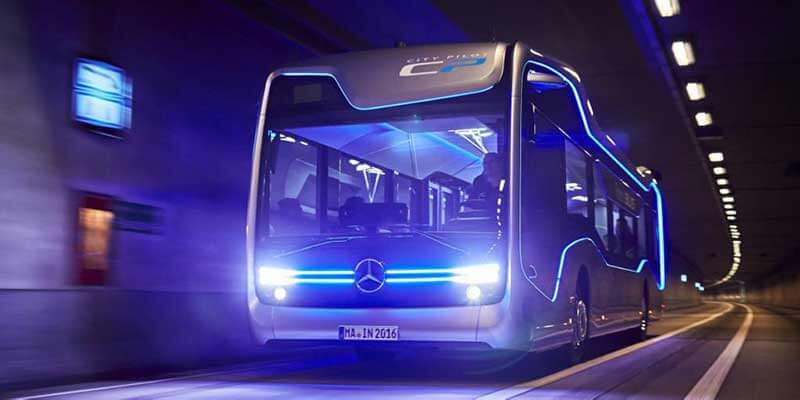- New Transit Signal Priority system decides which bus gets to drive first
- Smart TSP system in New York shows impressive results
- Algorithms help Boston optimise school district bus routes
- Goodbye and good riddance to gridlocks
Thanks to advanced technology, our children may never know what it means to be stuck in traffic. We probably don’t even need to wait for the implementation autonomous cars or super-fast tubes for relief, as smart tech and algorithms may provide a cure for the chronic congestion plaguing larger cities sooner than we think.
New Transit Signal Priority system decides which bus gets to drive first
Finding an effective way to improve public transport is a never-ending quest, but innovations in the public transportation system in the Canadian city of Laval look encouraging. The Société de transport de Laval recently implemented the Opticom™ Transit Signal Priority (TSP), which is a real breakthrough.
A traditional TSP system shortens the duration of red lights at intersections and keeps transit vehicles out of traffic jams. Due to tech limitations, however, it gives these vehicles priority at all times, even if the vehicle isn’t behind schedule. In some cases this actually creates traffic problems instead of alleviating them. This is where the Opticom TSP system proves more efficient. It incorporates an on-board computer that knows, in real time, whether the bus is running behind schedule. If it is, the system automatically alerts the smart lights by radio signal and issues a request for traffic light priority. If the bus isn’t running late, it doesn’t send this request. And there’s more to it. If two buses happen to arrive at the same intersection simultaneously, smart algorithms step in and grant priority to the bus carrying the most passengers.
“All of our surveys said the same thing: people need punctuality. People need good information. People need reliability. People need speed. With TSP, we address all of these issues. So, we’re very confident that we will be able to increase our ridership numbers,” said STL’s general manager, Guy Picard. While the city of Laval builds a more efficient public transport system that’ll encourage more citizens to use it, they’re looking after the environment, too. It’s expected to reduce Laval’s carbon footprint by more than 30,000 metric tons over the next ten years. With figures like these, more cities are expected to follow their lead.

Smart TSP system in New York shows impressive results
According to a report by the city comptroller, Scott M. Stringer, New York City’s deteriorating bus system has shed “100 million passenger trips since 2008 on buses that are the slowest in any large U.S. city”. The city’s inability to cope with traffic congestion is mirrored by this dying mode of public transport. But there’s light at the end of the tunnel. A new TSP system implemented and tested on five routes showed impressive results. And a report issued by the US Department of Transportation reveals that TSP that gives buses priority at intersections “has improved speeds by an average of 18 per cent on the five Metropolitan Transportation Authority (MTA) routes where the technology is live”.
Still, the Department of Transportation is planning to only introduce the system to 20 bus routes by 2020. That’s hardly enough, and transit advocates at the Bus Turnaround Coalition propose a different plan. They’re urging the DOT and the MTA to implement Transit Signal Priority citywide. They believe that the goal should be more encompassing and include TSP on 20 bus routes each year, “starting now”.
Algorithms help Boston optimise school district bus routes
Thanks to MIT researchers, schools in Boston will be taking new roads. Professor Dimitris Bertsimas, the co-director of the Operations Research Center, together with PhD students Arthur Delarue and Sébastien Martin, have developed an algorithm that could optimise bus routes and cut costs. And here’s how it works. Data gathered from Google Maps was used to analyse “traffic patterns during morning and afternoon rush hours”. Then, they combined the results with information about students and their schools. Mapping software and optimisation techniques helped them tailor an algorithm that optimises bus routes, cutting the time that empty buses spend on the road. With the new system, 50 unnecessary routes could be removed, “saving the school district between $3 million and $5 million annually”. And the best thing of all, is that this approach can be applied to any transportation system.
Goodbye and good riddance to gridlocks
Researchers are working on solutions to alleviate traffic congestion using the infrastructure that is available now. Their innovations involve smart systems and intelligent algorithms that optimise routes and reduce operating costs. These relatively simple yet efficient tech solutions are an important step towards a more efficient public transportation, a smaller carbon footprint and greater sustainability.
Share via:


